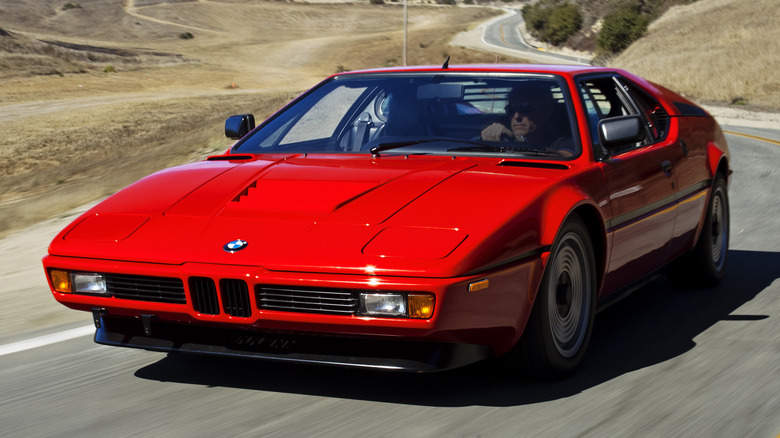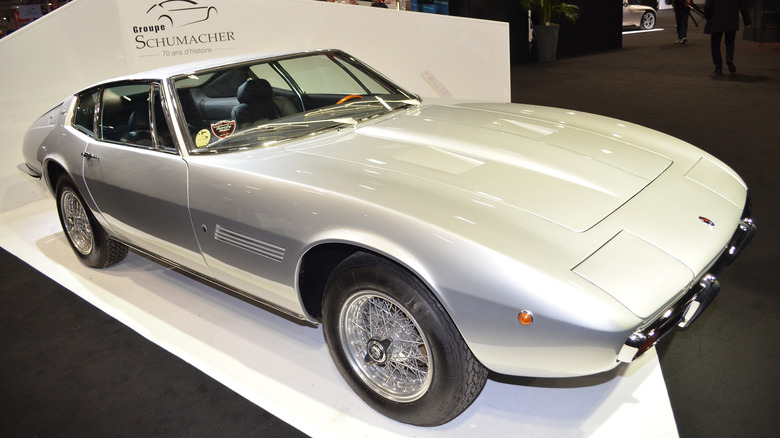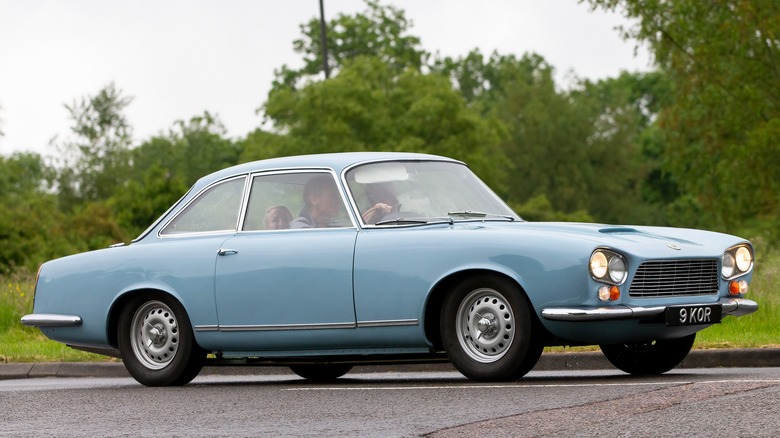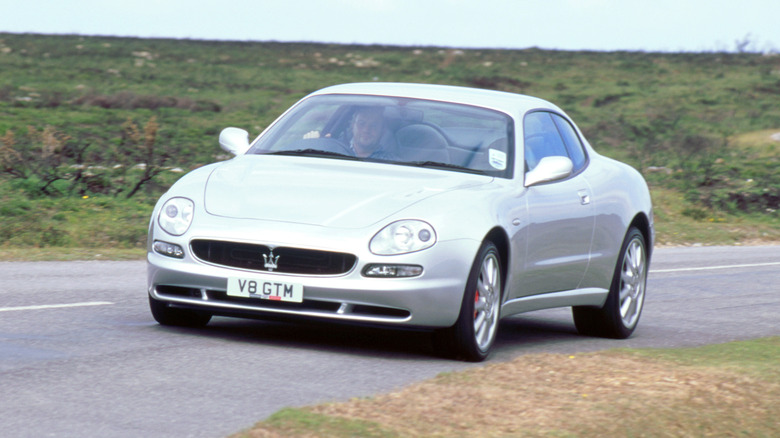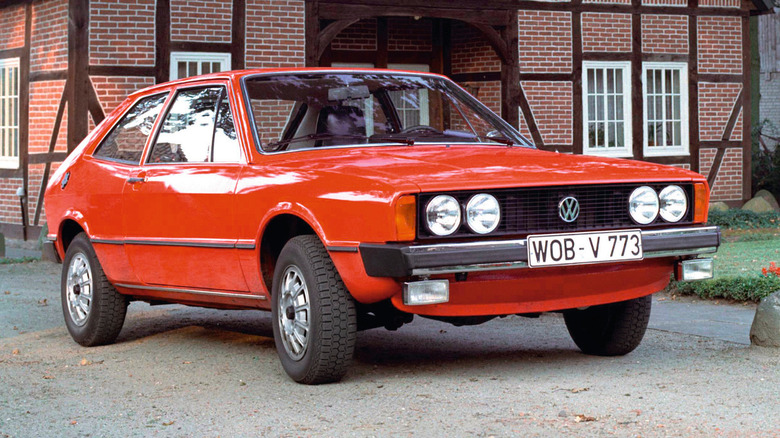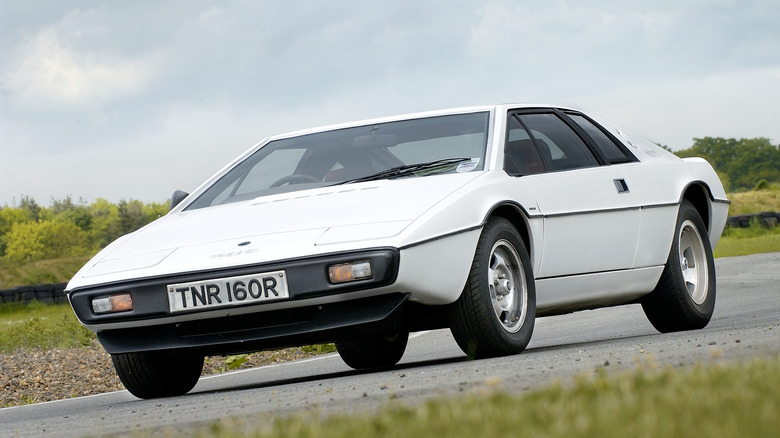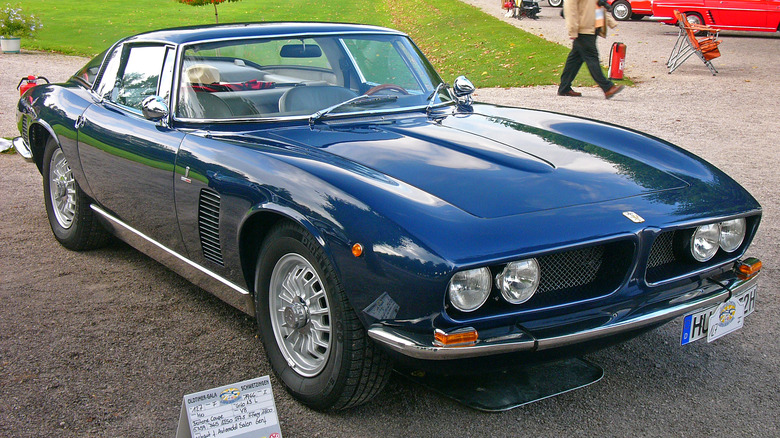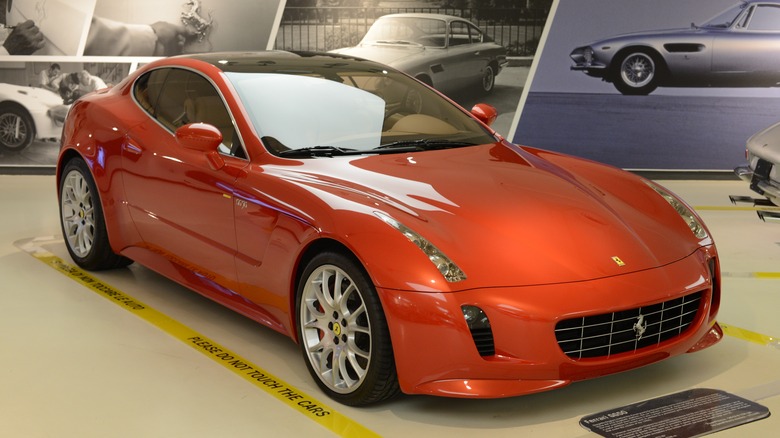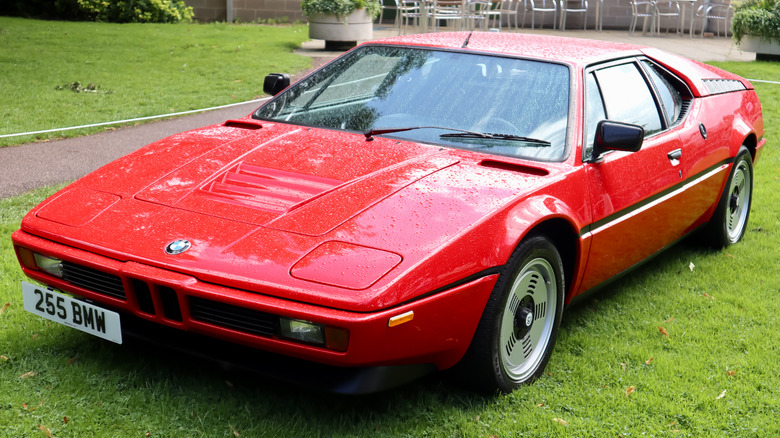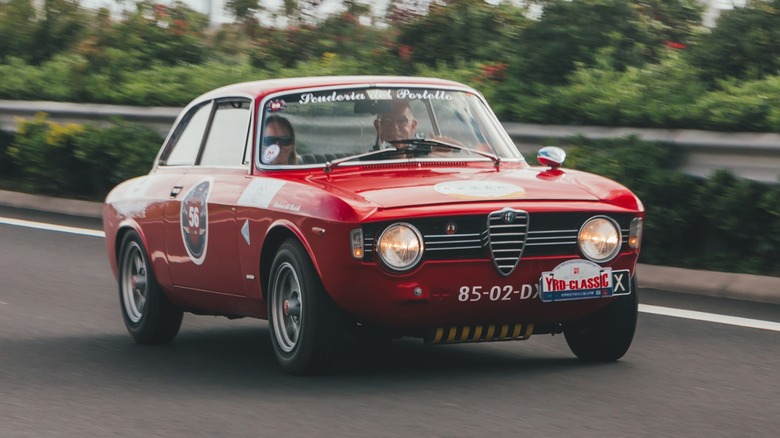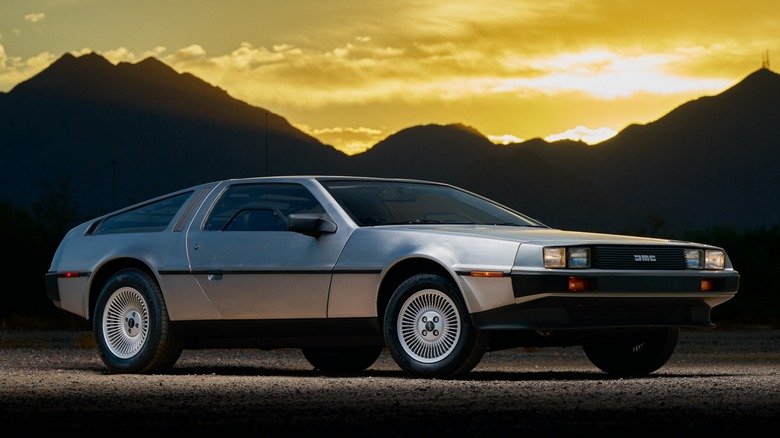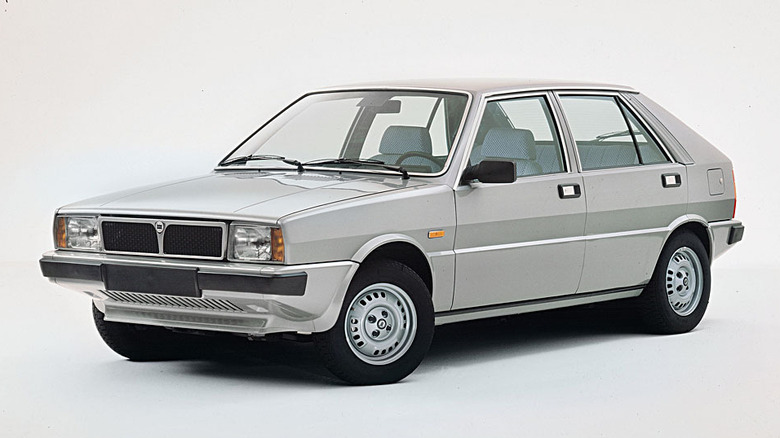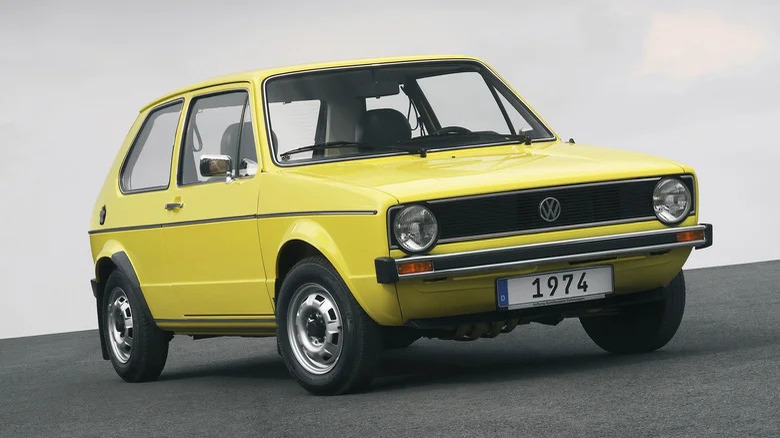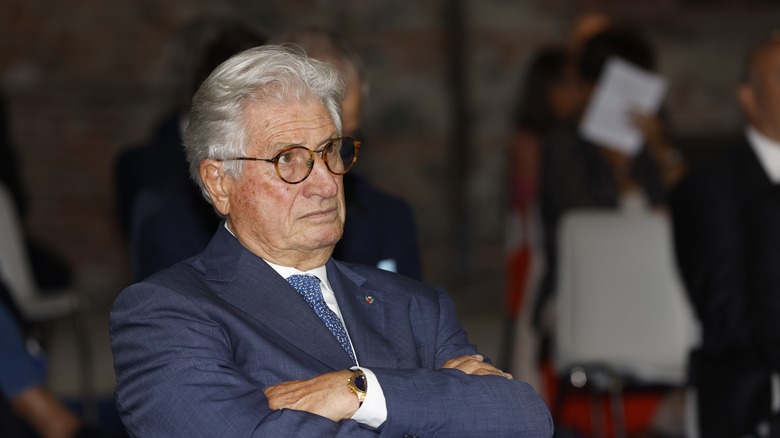12 Of The Best Cars Ever Designed By Giorgetto Giugiaro, Ranked
Few car designers can claim to have penned everything from classic grand tourers and supercars to bestselling hatchbacks. Even fewer can claim to have been responsible for a laundry list of brand-defining cars, many of which went on to influence other cars in their segment. There are a small handful of designers who might inspire such claims, but few, if any, of them have made quite as much impact on the car industry as Giorgetto Giugiaro.
In a career spanning more than 50 years, Giugiaro worked at several of the most iconic Italian design houses before founding his own design studio, Italdesign, in 1968. Over the decades, he has produced designs for many of the world's most revered automakers, including several once-great marques that are now defunct. Among many other projects, he's credited with roles as diverse as reinventing a classic Italian brand on the brink of extinction and being the driving force behind bringing an iconic German supercar to production. These are his greatest designs, each one a milestone in the history of its automaker.
Maserati Ghibli
The Ghibli was introduced in 1967 as a dramatic new design direction for Maserati. Styled by Giorgetto Giugiaro at Ghia, its sloping roofline and elegant proportions made it an instant hit and gave Maserati a much-needed financial boost. Almost 1,300 examples of the car were produced between 1967 and 1973, with the drop-top Ghibli Spyder being the rarest variant, with only 125 built. The car was originally designed to be a two-seater, but the production car adopted a 2+2 design for an extra touch of grand touring practicality.
Underneath the timeless design was a car that wasn't as radical as its bodywork made it seem. Most of its mechanicals were shared with older Maserati cars, with its 4.7L V8 engine first developed two decades earlier. It might not have been mechanically cutting edge, but the slippery exterior ensured impressive performance nonetheless. The most powerful variant of the car, the Ghibli SS, produced 335 horsepower and could reach an officially quoted top speed of 177 mph.
The Ghibli is named after a wind that blows across the Egyptian desert, and Giugiaro's design was the first Maserati to bear the nameplate. The name has since been brought back twice since then, first in the '90s as an evolution of the ill-fated Biturbo and second in the 2010s as a BMW 5 Series-rivaling sedan. Neither of these later cars got anywhere close to matching the magic of Giugiaro's original design.
Gordon-Keeble GT
One of Giorgetto Giugiaro's earliest designs, the Gordon-Keeble GT remains one of his best. Gordon-Keeble was a short-lived British luxury carmaker aiming to take on the likes of Aston Martin. It unveiled the prototype GT, which had been built in just four months, at the 1960 Geneva Motor Show. The bodywork turned heads, with journalists and the buying public alike surprised that the elegant car had been styled by a hotshot 21-year-old designer. Giugiaro was working for Bertone at the time, but only had one previous project under his belt.
The car's chassis was developed in Britain and its styling penned in Italy, but Gordon-Keeble chose to source its powertrain from America. Under the hood of the production GT sat a 327-cubic-inch Chevy V8 engine, although originally the car was planned to have a more powerful Chevy unit lifted from the Corvette. The final car was still no slouch, with a 0-60 mph time of roughly six seconds and a top speed of around 140 mph.
Unfortunately, production issues delayed the car for several years, and by the time the GT made it to market in 1964, other manufacturers had already caught up and exceeded it. It was a slow seller, and those cars that did sell were often delayed thanks to issues with Gordon-Keeble's parts suppliers. In the end, just 99 cars were built before the company folded, with one further car later built from spare parts.
Maserati 3200 GT
Although it's been largely overlooked in the decades since its introduction, the 3200 GT is a landmark model for Maserati. It was the first model to introduce the brand's modern styling, marking a shift away from the boxy, dated Biturbo derivatives that characterized much of the brand's output throughout the '80s and '90s. It went on sale in 1998 and remained in production until 2002, when it was replaced by the Maserati Coupe and Spyder. Both those latter models borrow heavily from the 3200 GT's styling.
Its V8 engine was shared with other Maserati models including the Quattroporte and Shamal, but was tweaked to generate 370 horsepower. The car was technologically pioneering as well as simply being fast, being the first production car to use LED tail lights, a technology that's since been adopted across the auto industry. Unfortunately, both its powertrain and electricals were built with stereotypical Italian build quality, contributing to the car's patchy reliability record.
Giorgetto Giugiaro's design for the 3200 GT helped reinvent the brand for the modern era, with a distinct design language that separated Maserati from its then-parent company Ferrari. Not everyone considers it to be the prettiest Giugiaro design — in particular, the boomerang tail lights are a love-it-or-hate-it affair — but the car's impact on the rejuvenation of the Maserati brand earns it the title of one of the designer's best works.
VW Scirocco
Although it never hit the sales highs of the VW Golf, the VW Scirocco is still a hugely influential model in the brand's history, and is responsible for carving a niche of its own. The first Scirocco would turn out to be a preview of Golf too, launching in 1974, shortly before its segment-defining stablemate. Both were designed by Giorgetto Giugiaro, who was by then working at Italdesign, the studio he co-founded.
The Scirocco was unique among sporty coupes as it prioritized efficiency as much as driver enjoyment. The range of engines on offer stretched from the most fuel-sipping 1.1L to a still frugal 1.5L, the latter producing around 84 horsepower in its most powerful form. This made the Scirocco a truly affordable proposition for the average car enthusiast, which no doubt was one factor in its sales success. More than half a million examples of the first-generation Scirocco would leave the factory by the time production ended in 1981.
However, the car's styling is arguably the biggest reason it became a hit. Giugiaro's sharp, boxy design drew in buyers, who were then swayed by the car's surprisingly economical running costs. According to VW, a 1974 survey saw 42% of buyers cite the car's design as their primary reason for purchase, while another 25% claimed the car's sporty perception won them over.
Lotus Esprit
Lotus founder Colin Chapman's focus on building lightweight, simple cars had sometimes come at the expense of styling. The Europa was a prime example, with the car's innovative mid-mounted engine giving it awkward rear proportions that kept it a niche model. To broaden the appeal of its successor, Chapman enlisted Italdesign's Giorgetto Giugiaro to create a more attractive design. The resulting car was christened the Esprit and launched in 1976.
The Esprit's design nailed the brief, drawing attention to the Lotus brand and setting itself apart from other British sports cars of its era. Its engine wasn't as exotic as its styling at launch, with only 140 horsepower on offer from its 2.0L four-cylinder engine in America, but later variants added more displacement and power.
The car is most famous to many for its prominent role in the 1977 James Bond film, "The Spy Who Loved Me." In the film, Bond drives an Esprit that can transform into a submarine, although in reality, several specially converted Esprits were used for filming. Only one was converted into a submarine, nicknamed "Wet Nellie," with that car currently under the ownership of Elon Musk.
Iso Grifo
The Iso Grifo is a highly sought after collectors' car, as much like Giorgetto Giugiaro's earlier design, the Gordon-Keeble GT, it combined Italian styling and American V8 muscle. However, unlike the Gordon-Keeble, the Iso was designed and engineered solely in Italy. Famed Italian engineer Giotto Bizzarrini, best known for his work on the Ferrari 250 GTO, was responsible for the car's chassis and internals, while Giugiaro penned the car's svelte bodywork.
Bizzarrini would later borrow the Grifo's design for his own car, adapting it further for racing duties. The Grifo itself would also be subject to design changes over its production run from 1965 to 1974. Power came from a 7.0L Chevy V8 at launch, although Ford V8 engines were used for some later models.
Despite Giugiaro's attractive design and the car's plentiful power, it never sold well. Just over 400 examples were produced, and that rarity has helped keep the Grifo a hot commodity among collectors. Iso never sold enough examples to be consistently profitable and folded shortly after it ended Grifo production in 1974.
Ferrari GG50
Very few clients could approach Ferrari and ask to build a custom car with an official Ferrari nameplate, but Giorgetto Giugiaro was no ordinary client. This was before the brand's Special Projects program too — instead, the project reportedly came about through a conversation between Ferrari's then-CEO Luca di Montezemolo and Giugiaro at the Paris Motor Show. The idea was to create a one-off to commemorate 50 years of Giugiaro designing cars, with the car being specifically designed for Giugiaro and his family to use.
The GG50 is built on the bones of the 612 Scaglietti, and the similarities between the two are immediately evident. Much of the car's front end is retained, although the designer added a distinctive set of slimline headlights, and there are also similarities in the side profile. However, the rear of the car was subject to a more drastic overhaul, with Giugiaro shortening the length of the car but heightening its rear roofline to make it easier to get in and out of the car's rear seats.
The car's fuel tank was also redesigned to allow for a more generous cargo capacity in the trunk, and a hatchback lid was fitted for easier access to the rear. The tail lights were also redesigned to be notably larger than the 612 Scaglietti. The GG50 might not have been one of Giugiaro's most influential designs, but thanks to its unique backstory, it still earns a spot as one of his greatest creations.
BMW M1
The one true supercar to emerge from the Bavarian marque wasn't actually quite as Bavarian as some enthusiasts might assume. Giorgetto Giugiaro designed the M1 at his Italdesign studio and, after a manufacturing deal with Lamborghini fell through, also played a leading role in facilitating its construction.
Under Italdesign's direction, two Italian engineering firms were tasked with building the chassis and bodywork, which was then assembled at Italdesign's manufacturing facility in Turin. The interior and final assembly were the only parts of the construction process completed in Germany, with coachbuilder Baur tasked with getting the car ready to ship to showrooms.
The car's powerplant was German, at least, being developed to meet racing homologation requirements. The 3.5L straight-six made 277 horsepower although in race spec form it could make significantly more. Despite its good looks and potent engine, the M1's high price meant that it was a sales failure for BMW. Only 460 examples were ever made, and the car's planned racing career never took off in the way BMW had envisioned either. Today the car remains a milestone in BMW's history and a highly sought-after collectors' item, even if the M1's backstory is a little different to what many remember.
Alfa Romeo Giulia Sprint GT
Designed by Giorgetto Giugiaro during his stint at Bertone, the Alfa Romeo Giulia Sprint GT is considered one of the prettiest classics of its era. It was one of his earliest projects, with the designer aged just 22 at the time. Like his other great designs, the Giulia helped shape Alfa Romeo's brand identity and influenced later models in its lineup. The Giulia Sprint GT was the sportier coupe variant of the car and spawned the Giulia Sprint GTA just two years after the former car's unveiling in 1963.
The Sprint GTA would go on to see exceptional success in racing, winning hundreds of titles across Europe and in North and South America. Other variants including the Sprint GTA Junior later emerged with different powerplants to take advantage of different racing regulations, but Giugiaro's design remained the one constant throughout every variant. Today, relatively few examples of the Giulia Sprint GT survive, but those that do are sought after by Alfisti.
DeLorean DMC-12
If it wasn't immortalized by its appearance in "Back to the Future," the DeLorean DMC-12 would very likely not have retained the fan club it does today. The car's development was spearheaded by John DeLorean, a former GM executive, but plagued with controversies throughout its development. Among the biggest was the large amount of British taxpayer money that had been pumped into building the DeLorean factory in Northern Ireland — equivalent to more than $400 million today, accounting for inflation. All that for a factory that would close less than two years after it officially began production as DeLorean Motor Company's losses mounted to terminal levels.
The car wasn't without its critics either, with many focusing on its lackluster performance and questionable build quality. However, no one could dispute that the DeLorean, styled by Giorgetto Giugiaro, was a head-turning car. Its futuristic design and famous steel body panels created a car unlike anything else on the road before it or since. The car's design secured its iconic role in "Back to the Future," remaining one of Giugiaro's greatest projects even if the car was less universally adored from a performance and manufacturing perspective.
Lancia Delta
Still considered by many to be the quintessential rally car, the Lancia Delta wouldn't hit peak fame until a decade or so after it was first introduced. With the World Rally Championship banning Group B in 1986 after a series of tragic accidents, the Group A class became the top tier of competition. The Delta Integrale became a legend in the following years, winning six consecutive titles and forging a reputation for Lancia that persists today, despite the modern marque being a shadow of its former self.
Long before it became a WRC icon, however, the Delta was already celebrated by the motoring press. It was introduced in 1979 and named European Car of the Year in 1980, with its boxy, distinctive design winning considerable praise. This design was penned by one Giorgetto Giugiaro, who had already made his mark on the hatchback segment by designing the VW Golf a few years earlier. Seeing the German car's success, Lancia hired Giugiaro to create a worthy Italian counterpart, and the design was such a triumph that it remained in production with only minor tweaks until 1994.
VW Golf
First launched in 1974, the original VW Golf is one of the most instantly recognizable cars ever built. It remains in production today and is now in its eighth generation, but it would never have been the success that it was without the input of Giorgetto Giugiaro. Tasked with creating a successor to the Beetle, Giugiaro devised a front-engine, front-wheel drive hatchback with similar styling to his previous VW project, the Scirocco.
The Golf's design was simple but memorable, with the car's two-box design resulting in increased space efficiency compared to the sloped design of the Beetle. The Golf wasn't just practical, either: thanks to VW's fuel-sipping powertrains, it was cheap to run. Shortly after the launch of the standard Golf, the hotter GTI variant also added a sportier edge to the Golf range.
The design's longevity was exceptional, with the Mk2 Golf carrying over most of Giugiaro's original silhouette, albeit onto a larger frame. The success of the Golf saw other manufacturers trying to copy its looks — some, like Lancia, even commissioned Giugiaro directly to make their Golf-rivaling hatchbacks. It might not be as exotic as many of the designer's other works, but the Golf's status as the segment-defining hatchback, as well as being the best-selling European car in history, makes it undoubtedly Giugiaro's greatest design.
Methodology
Giorgetto Giugiaro's catalog of car designs spans more than half a century and covers almost every segment of the automotive industry. To draw up a list of the greatest hits of his career, SlashGear focused on cars that made an outsized impact on either the history of their respective brands or on a certain segment. Alongside his reputation for penning bestsellers like the Lancia Delta and VW Golf, Giugiaro also styled many lesser-known but ultimately very influential vehicles.
As such, while sales success was taken into consideration when building the list, it was not a deciding factor. Alongside influence, enthusiast reputation was also considered, both in terms of distinctiveness and perceived beauty. Giugiaro was renowned for both: while the Alfa Romeo Giulia Sprint GT epitomizes classic Italian style, cars like the Ferrari GG50 embodied his penchant for practical, functional design. Selecting designs that demonstrated both was considered key for building a representative presentation of his best work.
